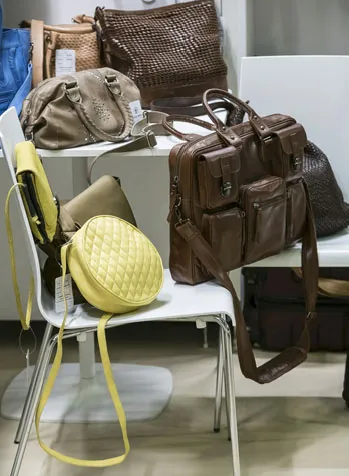Cross-industry innovations solve the new problems of German textile industry
By Zhao Xinhua
Germany is the fourth largest exporter of textile and garment products in the world after China, India and Italy. As one of the most innovative industries, the textile industry is characterized by using the least labor force to achieve the maximum output value. As a large importer of textiles and clothing in Eu—rope, Germany has about 1,400 textile and clothing enterprises with an annual turnover of about 28 billion euros. It mainly produces silk, cotton, chemical fiber, wool and fabrics, industrial nonwovens home textile products and multi—functional textiles. Among them, industrial textiles account for more than 40% of its total textiles, occupying the commanding heights of new technologies of global industrial textiles. Because of its size and geographical location, it pro—vides important opportunities for retailers, which makes the German maintain the leading position in the clothing market of 27 EU countries.
Moreover, there are 16 professional textile research institutes in Germany, which have made great progress in developing high—tech textiles and new sustainable production processes in close cooperation with local enterprises, enabling the German textile industry to avoid the competition of traditional textiles and march into high—tech and high—value—added products. This can be seen from Germany's achievements in the field of environmental and medical textiles. Its strong innovation ability makes German brand and design influen—tial internationally and popular with consumers.
German clothing articles undergo a severe drop in both imports and exports in 2021
According to an estimate of the Federal Statistical Office (Destatis), turnover in retail trade in Germany recorded a new record high in 2021. The real (price—adjusted) turnover in retail trade was 0.6% to 1.2% higher and the nominal (not price—adjusted) turnover was 2.8% to 3.4% higher in 2021 compared with 2020, the year with the highest turnover ever recorded. The resulting mean year—on—year rates of change were 0.9% on a real basis and 3.1% on a nominal basis. However, the turnover of some store—based retail trade, such as textiles, clothing, footwear and leather products, declined.


China becomes important trading partners
According to preliminary results, goods worth 245.4 billion euros were traded between Ger—many and China in 2021 (exports and imports). The Federal Statistical Office (Destatis) reports that China was Germany’s most important trading partner in 2021 for the sixth consecutive year. Next came the Netherlands with a trading volume of €206,3 billion, followed by the United States in third place with a foreign trade turnover of €194.0 billion. Exports were up by 14% and imports by 17.1% over 2020 figures.
Most imports to Germany came from China in 2021. Goods to the value of €141.7 billion were imported from there (plus 20.8% on a year earlier). Of this, imported clothing and accessories ex—ceeded €5.5 billion. The Netherlands ranked second among the countries for imports to Germany, accounting for goods worth €105.6 billion (plus 21.4%). The United States came third with a value of €72.1 billion (plus 6.5%).
Thomas Gitzel, chief economist at VP Bank, said that given the recovery of the supply chains and logistics between Germany and its major trading partners, especially China, he is optimistic about the growth prospect of the German foreign trade, the news agency reported.
Innovative industrial textiles
At present, centering on the strategic planning of the European Union and combining with the national conditions and development stages, Germany’s textile industry chooses key industries and develops innovative strategies and plans that are both farsighted and in line with the actual industrial development, effectively promoting the adjustment and upgrading of industrial structure. Modern commercial competition has been more reflected in the competition between the industrial chain, so for the traditional textile industry, Germany should look at the upgrading of the value chain in a more positive and comprehensive perspective.
Meanwhile, Germany’s textile industry will be the future study of new textile materials is fo—cused in the field of industrial textiles, actively promote the electronic textile materials, medical equipment, innovative, high—performance fiber composites with textile materials composite ma—terials, and energy saving in textile material, and “urban farm” with industry—university—institute cooperation in the field of textile materials. Since the application of textile products has already penetrated into many fields such as automobiles, toys, construction and military industry, the in—novation of textile materials is also of great significance to the development of other industries. Therefore, Germany attaches great importance to using “crossover” thinking to solve new prob—lems in traditional industries in industrial upgrading.
With “German innovation”, German industrial textiles processed with new fiber materials and special processes have already surpassed the tradition and become innovative solutions in more and more application fields. These contain a wide range of products from antibacterial to waterproof. Industrial textiles are essentially products that are manufactured in the same way as ordinary textiles but are used for technical purposes rather than traditional uses such as clothing, which is an evolution of textiles.

